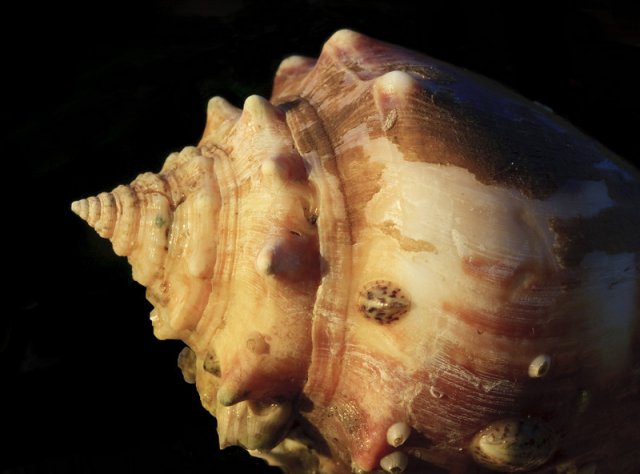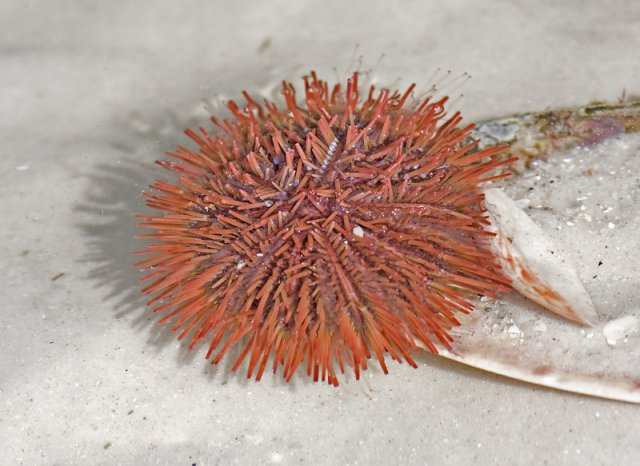Effects of Ocean and Coastal Acidification on Marine Life

Changing concentrations of carbon dioxide in the atmosphere is altering ocean chemistry and affecting marine life. The acidity of the ocean has increased about 25% since before the 1700s, greater than any other time within the last 2 million years. Given the rate at which ocean chemistry is changing, marine plants and animals may not have time to adapt or migrate as they did in the past.
Because of acidification, marine life face a two-fold challenge: decreased availability and increased acidity. Laboratory studies suggest changing ocean chemistry will 1) harm life forms that rely on carbonate-based shells and skeletons, 2) harm organisms sensitive to acidity and 3) harm organisms higher up the food chain that feed on these sensitive organisms. However, we do not yet know exactly how ecosystems will be impacted.
Building Shells and Skeletons: Calcifying Organisms
Many ocean plants and animals build shells and skeletons out of two chemicals that exist in seawater, calcium2+ and carbonate2-. Organisms combine calcium and carbonate to form hard shells and skeletons out of the mineral calcium carbonate3. The plants and animals that use calcium carbonate for structure and protection are called calcifying organisms3. Increased acidity slows the growth of calcium carbonate structures, and under severe conditions, can dissolve structures faster than they form.
The Struggle to Stay Healthy Under Increased Acidity
Just like humans, marine organisms require optimal conditions inside their bodies to stay healthy. If the acidity of seawater is beyond the optimum range for that organism, its body must use more energy to maintain healthy body fluid chemistry. Organisms can often compensate when faced with increased acidity, but this comes at the expense of using energy to grow critical body parts like muscle or shell. For example, scientists have found that mussels, sea urchins, and crabs start to dissolve their protective shells to counter elevated acidity in their body fluids. So even if an organism can adjust to survive increasing acidity its overall health can be impaired.

Effects on Larvae
Many marine fish and invertebrates have complex life cycles. They spend their early lives as larvaeA distinct, immature life stage of animals prior to metamorphosis into the adult life stage while they develop and disperse to distant areas via ocean currents. Larvae are very small, which makes them especially vulnerable to increased acidity. For example, sea urchin and oyster larvae will not develop properly when acidity is increased. In another example, fish larvae lose their ability to smell and avoid predators. The vulnerability of larvae means that while organisms may be able to reproduce, their offspring may not reach adulthood.
